- Home
- David Weber
More Than Honor woh-1 Page 24
More Than Honor woh-1 Read online
Page 24
Despite their incompletely understood nature, the junctions opened a whole new aspect of FTL travel and became focusing points or funnels for trade. There were not many of them, and one certainly could not use them to travel directly to any star not connected to them, but one could move from any star within a few dozen light years of a wormhole terminus to the terminus then jump instantly three or four hundred light-years in the direction of one's final destination with a tremendous overall savings in transit time.
In addition, of course, the discovery of wormhole junctions and a technique for their use imposed an entirely new pattern on the ongoing Diaspora. Theretofore, expansion had been roughly spherical, spreading out from the center in an irregular but recognizable globular pattern. Thereafter, expansion became far more ragged as wormhole junctions gave virtually instantaneous access to far distant reaches of space. Moreover, wormhole junctions are primarily associated with mid-range main sequence stars (F, G, and K), which gives a high probability of finding habitable planets in relatively close proximity to their far termini.
Once initial access to the far end of a wormhole junction had been attained, the habitable world at the far end (if there was one) tended to act as the central focus for its own "mini-Diaspora," creating globular quadrants of explored space which might be light-centuries away from the next closest explored star system.
(2) Warshawski Sail Logistics
By their very natures, the impeller drive and Warshawski Sail had a tremendous impact on the size of spacecraft. With the advent of the impeller drive, mass as such ceased to be a major consideration for sublight travel. With the introduction of the Warshawski Sail, the same became true for starships, as well. In consequence, bulk cargo carriers are entirely practical. Transport of interplanetary or interstellar cargoes is actually cheaper than surface or atmospheric transportation (even with countergrav transporters), though even at 1,200 c(the speed of an average bulk carrier) hauling a cargo 300 light-years takes 2.4 months. It is thus possible to transport even such bulk items as raw ore or food stuffs profitably over interstellar distances.
By the same token, this mass-carrying capability means interstellar military operations, including planetary invasions and occupations, are entirely practical. A starship represents a prodigious initial investment (more because of its size than any other factor), but it will last almost forever, its operational costs are low, and a ship which can be configured to carry livestock and farm equipment can also be configured to carry assault troops and armored vehicles.
Hyperships come in three basic categories: the low-speed bulk carrier; the high-speed personnel carrier; and warships.
The maximum acceleration and responsiveness of a Warshawski Sail starship is dependent upon the power or "grab value" of its sails and the efficiency of its inertial compensator. The more powerful (and massive) the sail generator, the greater the efficiency with which it can utilize the power of the grav wave; the more efficient the compensator, the higher the acceleration its crew can endure. Moreover, it requires an extraordinarily powerful sail, relative to the mass of the mounting ship, to endure the violent conditions of the upper hyper bands. This means that larger ships, with the hull volume to devote to really powerful sails, have greater inherent power and maximum theoretical average velocities (transit times) because they ought to be able to pull more acceleration from a given grav wave (thus reaching their optimum velocity of .6 c more rapidly) and to access the higher hyper bands (where the "shorter" distances effectively multiply their .6 c constant velocity by a quite preposterous factor).
There are, however, offsetting factors. The more powerful a Warshawski Sail, the slower its response time in realigning to a shift in the grav wave. This is potentially disastrous, but is, once more, offset to some extent by the ability of the more powerful sail to withstand greater stress. That is, it isn't as necessary to the starship's survival that it be able to reset or trim a sail to survive fluctuations in the grav wave about it. Put another way, a bigger ship with more powerful generators can "carry more sail" under given grav wave conditions than a smaller vessel and, all other things being equal, run the smaller vessel down.
But, of course, things aren't quite that simple. For starters, a smaller, less massive vessel gains more drive from the same sail strength. Because it is less massive, it accelerates more quickly for the same power. And the inertial compensator, marvelous as it may be, becomes more effective as its field area grows smaller and the mounting vessel's mass decreases, which means that a smaller ship can take advantage of its acceleration advantage over a larger vessel riding the same grav wave (and hence having access to the same "inertia sump") without killing its crew. If the smaller vessel can accelerate to .6 c(the highest survivable speed in hyper-space) before the larger ship, the larger ship's theoretical speed advantage is meaningless, as it can never overhaul. Under extreme grav wave conditions, the larger ship can maintain a greater effective acceleration, compensator or no, because the smaller ship's lighter sails are forced to "reef" (reduce their "grab factor") lest their generators burn out. This is particularly true in and above the zeta band, and few merchant ships ever venture that high. Even fairly small warships tend to have extremely powerful sails for their displacement, so that they can reach those higher bands, but smaller ships are simply unable to match the mass of a large ship's sail generators. This means that in some circumstances the larger ship can climb higher in the hyper bands and/or derive sufficiently more usable drive from a grav wave to offset its lower compensator efficiency.
In addition, smaller ships with less powerful sails can trim them much more rapidly and with greater precision. In wet-navy terms, smaller ships tend to be "quicker in the stays," able to adjust course with much greater rapidity and to take the maximum advantage of the power available to them from a given sail force. This means that a smaller ship with an aggressive sail handler for a captain can actually turn in a faster passage time over most hyper voyages than a bigger ship. There are, however, some passages (known to starship crews as "the Roaring Deeps") where exceptionally powerful, exceptionally steady grav waves operate. In these regions, the bigger ship, with its more powerful sails, is able to make full use of its theoretical advantages and will routinely run down smaller vessels.
In sublight movement, the larger vessel's more powerful sails (which equate to a more powerful impeller drive, as well) do not give it a speed advantage because of the nature of the inertial compensator. The curve of the compensator's most efficient operation means that a smaller vessel (with a smaller area to enclose in its compensator field) can pull substantially higher accelerations, and no amount of brute impeller power can create an artificial grav wave with a sufficiently deep inertial sump to overcome this fundamental disadvantage of a large ship. Capital ships thus are as fast as lighter warships in sustained flight but tend to be slower to accelerate or decelerate.
The tuning or trimming components of a Warshawski Sail generator are its most expensive and quickest wearing parts, and they wear out much more rapidly on more powerful generators with their higher designed power loads. Because of this, bulk carriers tend to use relatively low-powered sails and the lower hyper bands, which limits their practical speeds to perhaps 1,000-1,500 c. Passenger ships and those vessels specializing in transport of critical cargoes accept the higher overhead cost associated with more powerful sails and run in the range of 1,500-2,000 c. For the most part (though there are exceptions) only warships are designed around the most powerful sails and compensators their displacement will permit, giving speeds of up to 3,000 c. A bulk carrier's tuning components may last as long as fifty years between replacements and those of a passenger ship up to twenty years, but a warship is likely to require complete tuner overhaul and replacement as frequently as once every eight to ten years. On the other hand, a warship may spend decades "laid up" in orbit, making no demands at all upon its sails, so the actual life span of a given set of tuners may vary widely between ships of the same class,
depending upon their employment history.
(3) The Mechanics of the Diaspora
It was discovered early in the Diaspora that the maximum practical safe speed for a sublight ship was approximately .8 c, as radiation and particle shields can not protect the vessel above that velocity.
The generation ships were built as complete, life-sustaining habitats oriented around the smallest practical self-sustaining population and designed to boost to that velocity at one gravity. In the long term, onboard gravity was provided through centrifugal force. In addition to their human passengers, the generation ships also had to provide for all terrestrial livestock and plants which would be required to terraform the colonists' new home for their survival. Even aboard these huge ships, space was severely limited, and many early colonial expeditions reached their destinations only to come to grief through the lack of some essential commodity the settlers had not known to bring along. This sort of disaster became less common after about 800 pd, when the original, crude hyperships made it possible to conduct extensive surveys of potential colony sites before the slower colony ships departed, but by that time the generation ships were a thing of the past, anyway.
In 305 pd, cryogenic hibernation finally became practical. It had long been possible to cryogenically preserve limbs and organs, though even the best anti-crystallization procedures then available were unable to prevent some damage to the preserved tissues. But where minor damage to an arm or a liver was acceptable, damage to a brain was not, and the early cryogenic pioneers' enthusiastic predictions about indefinite suspension of the life processes had proven chimerical.
It was Doctor Cadwaller Pineau of Tulane University who, in 305, finally cut the Gordian knot of cryogenic hibernation by going around the crystallization problem. He found that by lowering the hibernator's temperature to just barely above the freezing point he could maintain the physiological processes indefinitely at about a 1:100 time ratio. In other words, a hibernating human would age approximately one year for every century of hibernation, and his nutritional and oxygen requirements were reduced proportionately. Over the next several decades, Pineau and his associates further refined his process, working to overcome the problem of muscular atrophy and other physiological difficulties associated with long comatose periods, and eventually determined that optimum results required a hibernating individual to rouse and exercise for approximately one month in every sixty years (ie., after six physiological months), which remained a fixed requirement throughout the cryogenic colonization era.
What this meant was that the life support capabilities of a cryo ship could be vastly reduced in comparison to those of a generation ship. Moving at .8 c, the colonists experienced a 60% time dilation effect; in other words, each sixty-year period of hibernation used up one century of voyage time by the standards of the remainder of the universe. Thus an entire one-century voyage could be made without a single "active" period and would consume only 7.2 apparent months of the traveler's life span. Longer voyages would require periodic awakenings, but they could be staggered, permitting the currently roused crew to use only a fraction of the life support the entire crew would require. The result was to permit far larger numbers of colonists to travel on a given sized ship with a far lower subjective time passage.
A further boost to colonization came about in 725 pd with the advent of the first hyper drive. The casualty rates among early hyperships were so severe that it took a rather daredevil mentality to go aboard one, and colonists weren't normally noted for that sort of personality. To claim a new home world they would take risks, yes, but not risks they could avoid.
But what the hyperships provided was a survey vehicle which could travel more than sixty times as fast as a sublight ship, and the people who went in for discovering and exploring (as opposed to settling) new worlds had just the sorts of mentalities to risk hyper travel. A situation thus arose in which survey ships, generally operated by private corporations, undertook the high-risk job of locating potential colony sites which were then auctioned to prospective colony expeditions. Even with the hyper drive, this required that everyone involved take a very long view of things, but humanity adjusted to that just as it had once adjusted to the novelty of instant communication to any point on a single planet.
It is believed that the first Warshawski Sail colony ship was the Icarus, which departed Old Earth on September 9, 1284 pd, under the command of Captain Melissa Andropov (and, despite its name, provided over two centuries of dependable, reliable service before it was finally scrapped in 1491 pd), but for well over five hundred years, the dichotomy of FTL hypership survey expeditions and sublight hibernation colony transports remained the standard.
When the transition finally occurred, there were several very unfortunate instances in which unscrupulous operators used the new hyper sail technology to pass hibernation ships en route to their new homes. When the original colonists arrived, it was only to find well-established (and armed) claim-jumpers already squatting on their planned home worlds. If there was an already established colony in the vicinity, it might take a hand to assist the original colonists, even to the extent of lending military aid to eject the claim-jumpers, in order to discourage such unsavory elements from ruining the neighborhood. If there was no such well-inclined planet in the vicinity, the original colonists were out of luck, particularly since their technology might be several centuries less advanced than that of the thieves they confronted. In some cases, this created a domino effect. Expeditions which found themselves dispossessed of their colony sites often lacked the resources to return whence they had come (even if they had the inclination) and many opted to risk settling an unsurveyed world if there were stars with habitable planets (or which were likely to have such planets) in the vicinity. Many of them came to grief as the old generation ship colonies had in attempting to settle worlds other than the ones they had planned their original expedition's equipment list to meet, and those which did not often wound up displacing yet another group of legitimate colonists. Other such instances ended far more happily, with the second group of settlers discovering a world which was already partly settled and a group of "squatters" who paid their own way with the improvements they had already made and were integrated peaceably into the ranks of the "legitimate" colonists.
With the advent of Icarus and her later sisters, however, the entire pattern of colonization shifted. It was now possible to make a 500 light-year voyage in barely two-and-a-half years, an interval which dropped steadily as improvements in Warshawski technology became available. Hibernation was still used on most colony ships, but now it was simply to cram in the largest possible number of passengers, not a necessity. Indeed, as higher and higher speeds became possible, the hibernation features began to fall by the wayside.
(4) The Star Kingdom of Manticore
(A) Founding and Early History
The original colony expedition to Manticore departed Old Earth on October 24, 775 pd, aboard the sublight hibernation ship Jason for the Manticore Binary. Manticore, approximately 512 light-years from Earth, was a G0/G2 distant binary first confirmed to have planets in 562 pd, by the astronomer Sir Frederick Clarke. Its distance from Sol was such that the voyage would take 640.5 years (just over 384 subjective years), requiring that each colonist be waked for exercise seven times. Accordingly, the colonists were investing about 4.5 years of their lives (and all of their money) in the voyage.
Sixty percent of the colonists were Western Europeans, with most of the remainder drawn from the North American Federation, the Caribbean, and a very small minority of ethnic Ukrainians. The total expedition consisted of 38,000 adults and 13,000 minor children, and the "rights" to the system had been purchased at auction from the survey firm of Franchot et Fils, Paris, France, Old Earth. "FF" (as it was known) had a high reputation, and its survey ship Suffren had made the same voyage in just twenty years. Suffren's crew had done FF's usual, professional job, although, of course, all data was accompanied by the caution that it would
be 650 years out of date when the colonists arrived, and FF sold its rights in the Manticore System to the Manticore Colony, Ltd., for approximately 5.75 billion EuroDollars. As part of the transfer of rights, FF expunged all data on the system from its memory banks, transferring the information to the Federal Government of Earth's World Data Bank's maximum security files. This was a standard safeguard to protect Manticore Colony against the occupation of the planet by later expeditions with faster ships, as it was already apparent that advances in hyper travel might well make such protection necessary, yet it was also recognized that there was no way to guarantee that faster, more capable hyperships would not beat the colonists to Manticore. Accordingly, Roger Winton, President and CEO of Manticore Colony (already elected first Planetary Administrator) opted to establish the Manticore Colony Trust of Zurich.
The MCT's purpose was to invest all capital remaining to the MC after mounting the expedition (something under one billion EuroDollars) and use the accrued interest to watch over the colonists' rights to their new home. It was a wise precaution, for when Jason finally arrived in the Manticore System on March 21, 1416 pd, her crew discovered a modest settlement on the planet they christened Manticore, but it was staffed by MCT personnel who also manned the four small Earth-built frigates protecting the system against claim-jumpers. Indeed, so well had the Trust done in the last six centuries that Manticore found itself with a very favorable bank balance, and the frigates became the first units of the Manticoran System Navy (later the Royal Manticoran Navy). Moreover, the small MCT presence on Manticore included data banks and carefully selected instructors assigned to update the colonists on the technical advances of the last six centuries. This last was a feature even Winton had not anticipated, and he had very good reason to be pleased both with his own decision and the diligence, foresight, and imagination with which a succession of MCT managers had discharged their duties.

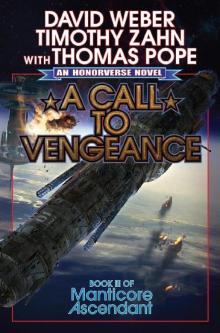 A Call to Vengeance
A Call to Vengeance March Upcountry
March Upcountry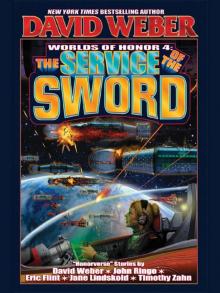 The Service of the Sword
The Service of the Sword Worlds of Honor
Worlds of Honor The Sword of the South
The Sword of the South Mission of Honor
Mission of Honor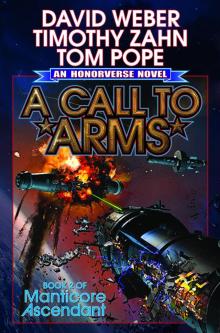 A Call to Arms
A Call to Arms The Captain From Kirkbean
The Captain From Kirkbean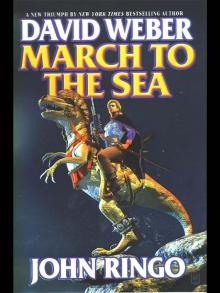 March to the Sea
March to the Sea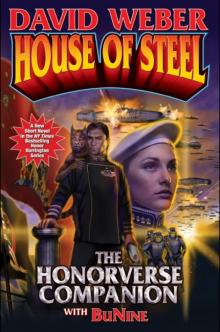 House of Steel: The Honorverse Companion
House of Steel: The Honorverse Companion At the Sign of Triumph
At the Sign of Triumph Like a Mighty Army
Like a Mighty Army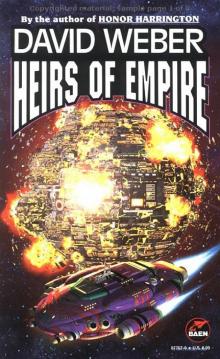 Heirs of Empire
Heirs of Empire March to the Stars
March to the Stars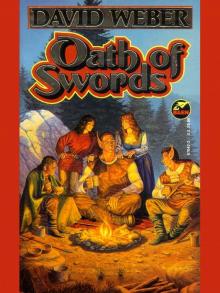 Oath of Swords
Oath of Swords On Basilisk Station
On Basilisk Station Oath of Swords and Sword Brother
Oath of Swords and Sword Brother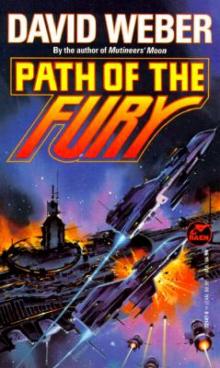 Path of the Fury
Path of the Fury A Mighty Fortress
A Mighty Fortress War of Honor
War of Honor 1633
1633 In Fury Born
In Fury Born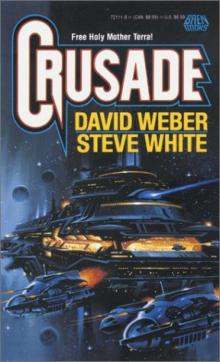 Crusade
Crusade Storm From the Shadows
Storm From the Shadows In Fire Forged
In Fire Forged A Beautiful Friendship
A Beautiful Friendship Into the Light
Into the Light Shadow of Freedom
Shadow of Freedom How Firm a Foundation
How Firm a Foundation The Apocalypse Troll
The Apocalypse Troll More Than Honor
More Than Honor Crown of Slaves
Crown of Slaves The Gordian Protocol
The Gordian Protocol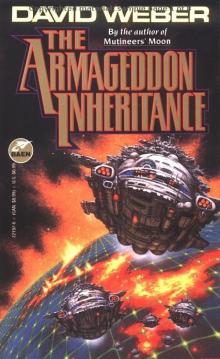 The Armageddon Inheritance
The Armageddon Inheritance Out of the Dark
Out of the Dark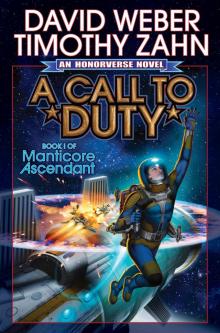 A Call to Duty
A Call to Duty The Shadow of Saganami
The Shadow of Saganami Wind Rider's Oath
Wind Rider's Oath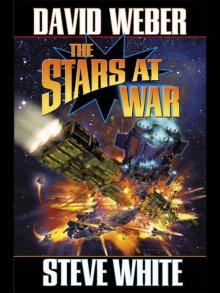 The Stars at War
The Stars at War Uncompromising Honor - eARC
Uncompromising Honor - eARC Fire Season
Fire Season A Rising Thunder
A Rising Thunder Off Armageddon Reef
Off Armageddon Reef Mutineer's Moon
Mutineer's Moon Hell Hath No Fury
Hell Hath No Fury Worlds of Weber
Worlds of Weber Through Fiery Trials--A Novel in the Safehold Series
Through Fiery Trials--A Novel in the Safehold Series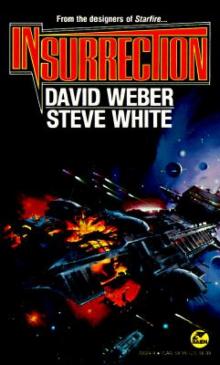 Insurrection
Insurrection By Heresies Distressed
By Heresies Distressed War Maid's Choice
War Maid's Choice At All Costs
At All Costs Shadow of Victory
Shadow of Victory Through Fiery Trials
Through Fiery Trials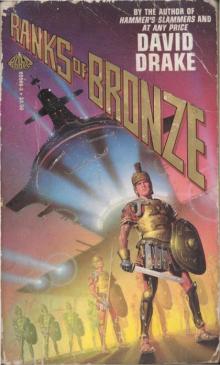 Ranks of Bronze э-1
Ranks of Bronze э-1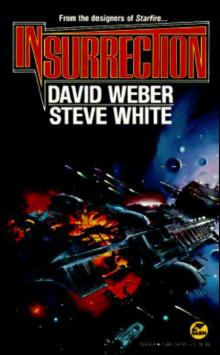 The Insurrection
The Insurrection Safehold 10 Through Fiery Trials
Safehold 10 Through Fiery Trials Old Soldiers
Old Soldiers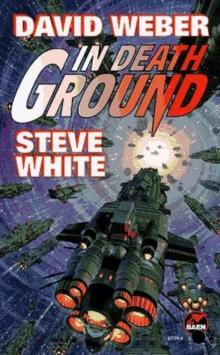 In Death Ground s-2
In Death Ground s-2 Storm from the Shadows-OOPSIE
Storm from the Shadows-OOPSIE In Enemy Hands hh-7
In Enemy Hands hh-7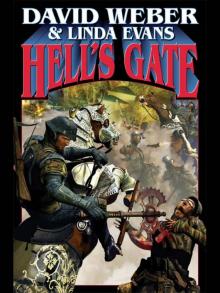 Hell's Gate-ARC
Hell's Gate-ARC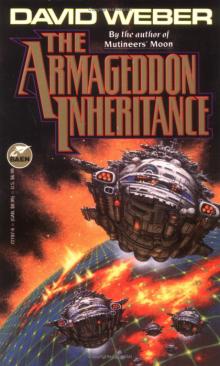 The Armageddon Inheritance fe-2
The Armageddon Inheritance fe-2 War Maid's choice wg-4
War Maid's choice wg-4 A Call to Vengeance (Manticore Ascendant Book 3)
A Call to Vengeance (Manticore Ascendant Book 3)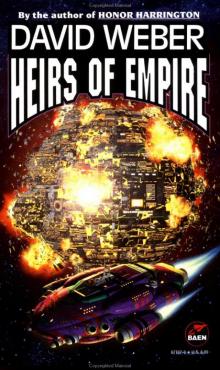 Heirs of Empire fe-3
Heirs of Empire fe-3 Storm From the Shadows si-2
Storm From the Shadows si-2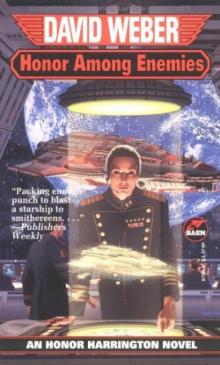 Honor Among Enemies hh-6
Honor Among Enemies hh-6 Changer of Worlds woh-3
Changer of Worlds woh-3 Bolo! b-1
Bolo! b-1 Flag In Exile hh-5
Flag In Exile hh-5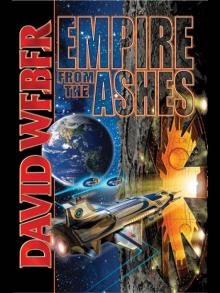 Empire from the Ashes
Empire from the Ashes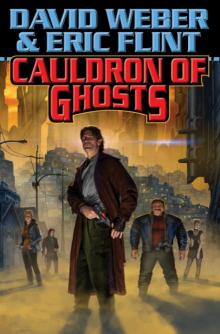 Cauldron of Ghosts
Cauldron of Ghosts Torch of Freedom
Torch of Freedom March To The Sea im-2
March To The Sea im-2 Shadow of Saganami
Shadow of Saganami In Fire Forged: Worlds of Honor V-ARC
In Fire Forged: Worlds of Honor V-ARC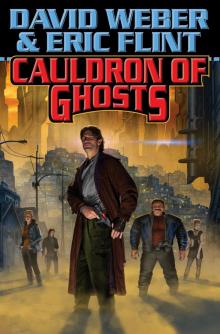 Cauldron of Ghosts (eARC)
Cauldron of Ghosts (eARC)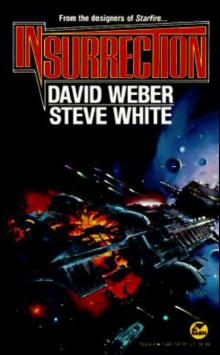 Insurrection s-4
Insurrection s-4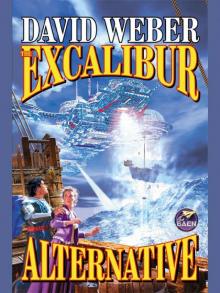 The Excalibur Alternative
The Excalibur Alternative Shadow of Freedom-eARC
Shadow of Freedom-eARC The Short Victorious War
The Short Victorious War Manticore Ascendant 1: A Call to Duty (eARC)
Manticore Ascendant 1: A Call to Duty (eARC) Beginnings-eARC
Beginnings-eARC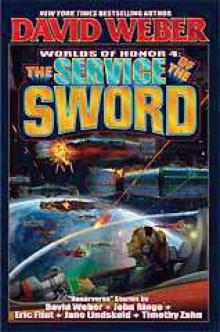 The Service of the Sword woh-4
The Service of the Sword woh-4 The Sword of the South - eARC
The Sword of the South - eARC Treecat Wars sh-3
Treecat Wars sh-3 Worlds of Honor woh-2
Worlds of Honor woh-2 Fire Season sk-2
Fire Season sk-2 March To The Stars im-3
March To The Stars im-3 Echoes Of Honor hh-8
Echoes Of Honor hh-8 A Beautiful Friendship mth-1
A Beautiful Friendship mth-1 The Universe of Honor Harrington mth-4
The Universe of Honor Harrington mth-4 In Fire Forged: Worlds of Honor V
In Fire Forged: Worlds of Honor V Mission of Honor-ARC
Mission of Honor-ARC March Upcountry im-1
March Upcountry im-1 Sword Brother wg-4
Sword Brother wg-4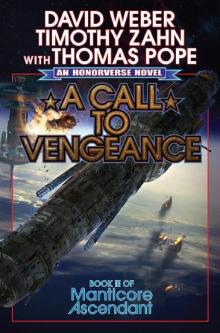 Manticore Ascendant 3- A Call to Vengeance
Manticore Ascendant 3- A Call to Vengeance We Few
We Few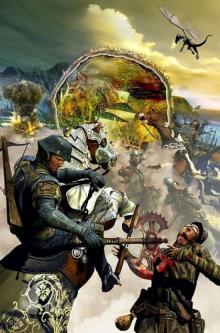 Hell's Gate m-1
Hell's Gate m-1 Throne of Stars
Throne of Stars Empire of Man
Empire of Man The War God's Own wg-2
The War God's Own wg-2 Wind Rider's Oath wg-3
Wind Rider's Oath wg-3 A Rising Thunder-ARC
A Rising Thunder-ARC Torch of Freedom wos-2
Torch of Freedom wos-2 War Of Honor hh-10
War Of Honor hh-10 How Firm a Foundation (Safehold)
How Firm a Foundation (Safehold)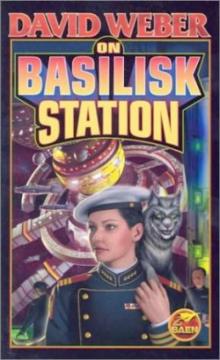 On Basilisk Station hh-1
On Basilisk Station hh-1 The Honor of the Qween hh-2
The Honor of the Qween hh-2 War Maid's Choice-ARC
War Maid's Choice-ARC Oath of Swords-ARC
Oath of Swords-ARC Oath of Swords wg-1
Oath of Swords wg-1 A Beautiful Friendship-ARC
A Beautiful Friendship-ARC Sword Brother
Sword Brother Shiva Option s-3
Shiva Option s-3 Sir George And The Dragon
Sir George And The Dragon Ashes Of Victory hh-9
Ashes Of Victory hh-9 A Rising Thunder hh-13
A Rising Thunder hh-13 The Road to Hell - eARC
The Road to Hell - eARC Hell Hath No Fury m-2
Hell Hath No Fury m-2 The Road to Hell (Hell's Gate Book 3)
The Road to Hell (Hell's Gate Book 3)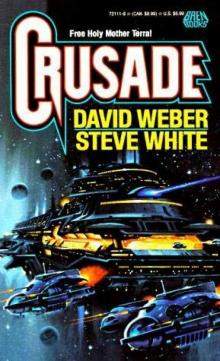 Crusade s-1
Crusade s-1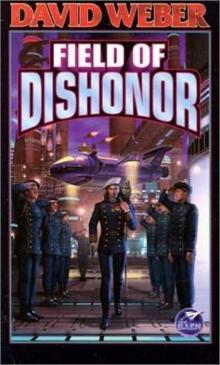 Field Of Dishonor hh-4
Field Of Dishonor hh-4 The Honor of the Queen
The Honor of the Queen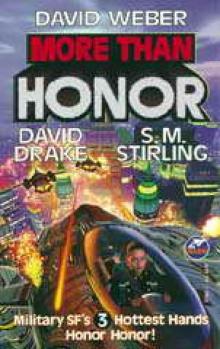 More Than Honor woh-1
More Than Honor woh-1 In Fury Born (ARC)
In Fury Born (ARC)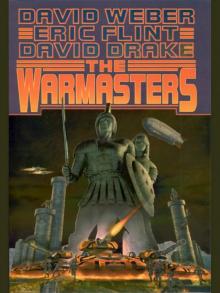 The Warmasters
The Warmasters The Short Victorious War hh-3
The Short Victorious War hh-3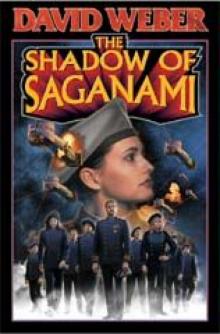 The Shadow of Saganami si-1
The Shadow of Saganami si-1 Empire of Man 01 - March Upcountry
Empire of Man 01 - March Upcountry How firm a foundation s-5
How firm a foundation s-5 Treecat Wars
Treecat Wars